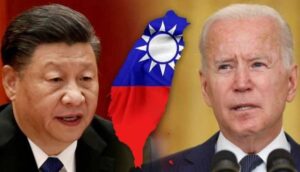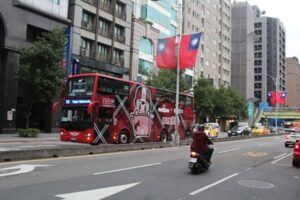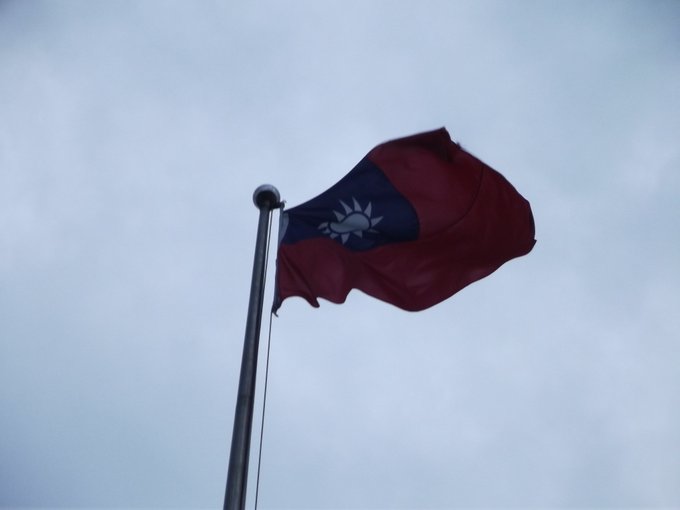Shift in the Beijing, Taipei, Washington Triangle: A View from the Ground
My visit to Taiwan in September and October 2022, took place during several overlapping developments: I experienced the heated rhetoric following Nancy Pelosi’s visit in the island, the 10/10 celebration day, and the Chinese Communist Party 20th Congress in late October. In the following blog piece, I outline some impressions from my visit in Taiwan, encounters with people, and observations of these interconnected dynamics.
As recent developments in international affairs have become more and more unpredictable, Taiwan is facing the brunt of many geopolitical shifts. This is obvious when watching the news, and reading tweets from thousands of miles away. It is even more obvious in conversations with interlocutors or peers in Taipei. “After Hong-Kong, they said that Taiwan is next. Now after Ukraine, they say Taiwan is next. Something big happens, and Taiwan is always next”, said one of my Taiwanese interlocutors. Indeed, due to its implications for regional ties, as well as great-power politics, Taiwan is likely to come up in conversation in the event of international political shocks.

Image: Heightened tensions between PRC and U.S. may erupt in Taiwan (Source: Zeenews/PTI)
When I arrived in Taiwan in late September, dust was still settling after a tension-filled summer of heated statements between Beijing and Taipei, as well as military drills around the island. The biggest concern in my conversations with the Taiwanese, even in small talks, was related to cross-strait relations. What is evident is that the cross-strait relations in the recent years (especially post-2016 era) have spiralled into a downfall, and what is worse is that it is not certain what the end result will be.
The rhetoric of the leaders has become increasingly harsh, and the way people perceive the future seems to have become more uncertain, even grimmer. Beijing’s use of force and the possibility of military conflict seem more probable than a few years ago, increasing thus insecurity about Beijing’s next act. A frequent comparison was made with Hong-Kong. “We see what happened to Hong-Kong and democracy there, so we do not want that”, is what I heard more than once.
I found out too late about the necessary registration to attend the ceremony marking the island’s National Day in front of the Presidential Office in Taipei. Nevertheless, on the October 10th, I went out to observe and take pictures. I was surprised to see no flags or hear any music in the Shilin District where I lived. In the parts closer to the city centre there were signs of a contained celebration (flags in the streets). The 10/10 Day celebrations are very modest, I thought. A very usual Monday in most all parts of Taipei except for the area surrounding the Presidential Palace.
On the dawn of the National Day, I had a fascinating chat with an indigenous old man from Taiwan. He was adamant that the celebration was an imported fest from Mainland China, and had no historical linkage to the island’s native people. He also argued in great length that such celebrations (as well as changing the name of the once-called Formosa island to the Republic of China) did not represent the (indigenous) Taiwanese people “who had to learn Mandarin in schools but spoke Taiwanese at home”, pointing out that these are two different languages. This point of view is not common and therefore difficult to find represented in foreign media.

Image: Afternoon of the 10/10 Day in the Zhongshan District. (Source: Butrint Berisha)
Following the speech of President Tsai online, many felt their fears be reconfirmed about the crisis in cross-strait relations. Overall, the worsening relations is due to several factors, which were brought up in different encounters with Taiwanese people I met. There were three main points that people discussed in these meetings: Xi Jinping’s consolidation of power in Mainland China makes the Chinese position towards unification more assertive, the DPP election victory in 2016 in Taiwan and consequential harder line against Beijing, and the U.S. policy in the region in face of strategic competition with China.
The first is related to the consolidation of power by Xi Jinping in Mainland China since taking power in 2012, which saw the Chinese Communist Party become more ambitious in respect to China’s global reach. The goal of uniting China as one of the ways to overcome the so-called ‘century of humiliation’, has gained relevance in Xi’s policy. This was once again highlighted in the recent CCP National Congress Xi noting state that the “complete reunification of our country must be realized, and it can, without doubt, be realized”, a statement which may be interpreted as a sign that unification by force has not been ruled out. In the same vein, the third White Paper on solving the Taiwan issue, which was published by Chinese authorities in August 2022, follows a more assertive tone than the two previous documents published in 1993 and 2000. Therefore, how Beijing observes the future of the island has changed in recent years, with the goal of unification becoming clearer, followed by aggression, threats, and also military drills.
The second factor pointed to multiple times is the change of government in Taipei. In 2016 the Democratic Progressive Party won the elections over the KMT. Since taking power, the DPP and President Tsai have affirmed their vision holding that Taiwan should seek more affinity and economic cooperation with other parts of East Asia and South-East Asia in order to overcome their dangerous reliance in Mainland China. The New Southbound Policy that was introduced shortly after President Tsai took power is a step in that direction.
This follows a wider outlook that DPP has for Taiwan where the idea of maintaining independence (without formally declaring it) has a more central role in the future vision of the country. This stands in stark comparison to its historical adversary, the KMT, which foresees the option of unification to become a reality somewhere down the road. Taiwan’s President Tsai has not backed down in her statements following a hard line against Beijing. The word independence is not omitted from her speeches, however President Tsai frequently pledges to defend the ‘sovereignty and democracy’ of Taiwan at all costs. This is an important discursive element in the Beijing-Taipei conflict which puts it in the middle of a larger battle between democracies and autocracies. This fits also into the larger global debates that one may now encounter regularly as part of Russian’s invasion of Ukraine.
Interestingly, it also seems that the Taiwanese society is less certain about its own future and identity. The tension in respect to identity appeared in many of my conversations. “I am Taiwanese”, “I am Chinese”, or “I am Taiwanese-Chinese” are all answers that one might hear, sometimes mentioned by the same person at different points throughout a conversation. A recent poll has shown that support for independence amongst Taiwanese people has been growing steadily. Whilst not taking these results at full face value, this also speaks to the fact that independent Taiwan might challenge those who prefer maintaining the status quo or even unification. The attitude of the public in Taiwan is important and it may have consequences for actions of all parties involved, but especially for decisions that will be taken by Taipei in the coming months and years.
The third important consideration impacting cross-strait relations is connected to the U.S. policy in the region, and especially its approach towards Taiwan, as its main supporter in the realm of security. In 2017, during Trump’s administration, the U.S unveiled the Free and Open Indo-Pacific Strategy. The document openly and critically portrayed its vision of strategic competition with China. I It made a shift in the U.S foreign policy in the region as it clearly recognised that the U.S. was facing challenges from regional powers pertaining to its economic and military interests.
In recent months several statements by President Biden have also made headlines, with two main assertions standing out: first, President Biden has declared publicly that the U.S. will defend Taiwan, and he vaguely declared that it is up to the Taiwanese people to decide on the question of independence. The second statement was clarified by the White House later, claiming the President’s interview did not announce a policy change on Taiwan.
Still, these statements give an indication that Taiwan remains an important aspect of the U.S. foreign policy in the region, and that the role of the U.S. as the main supporter of Taiwan in these dynamics will likely remain pivotal in future developments and arrangements. Furthermore, these statements show that although Taiwan has entered a new complex phase in cross-strait relations, the U.S. support does not seem to have diminished. Although the majority of people I met had a positive perception, not everyone had a rosy idea regarding American defence of Taiwan. During one conversation, a Taiwanese woman argued that “Taiwan should be cautious in having fully trust in the U.S., as they had shown in 1971 that they do not really care about Taiwan.”
Overall, due to these three overlapping dynamics, it appears that the worsening of cross-strait relations has taken too many irreversible turns. The pre-2016 cross-strait relations have been damaged beyond repair, and the balance in the Beijing, Taipei, Washington triangle has been disrupted. This was a feeling that came out of many different encounters with the Taiwanese. The current spiral on which the Taiwan DPP-led government and Chinese Communist Party have created appears to have become more complex. At the same time, the U.S. seems to be attempting to find its way from strategic ambiguity to strategic clarity.
A process of de-escalation which would open up to more friendly cross-strait relations seems admittedly difficult. However, even if it did somehow occur, it looks as though it would still require sketching a new approach, rather than picking up where all sides left off in 2016. This is the reason why the coming months and years might be the most challenging for the island. This is also a source of insecurity for most of my interlocutors that I met during those weeks who were worried that “Taiwan may be next.”
Author: Butrint Berisha






